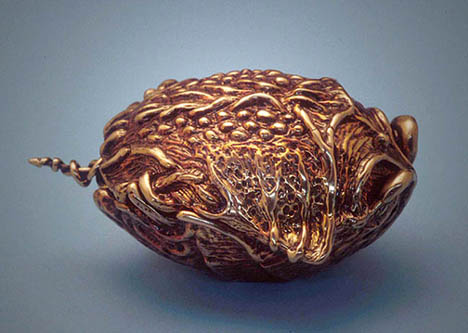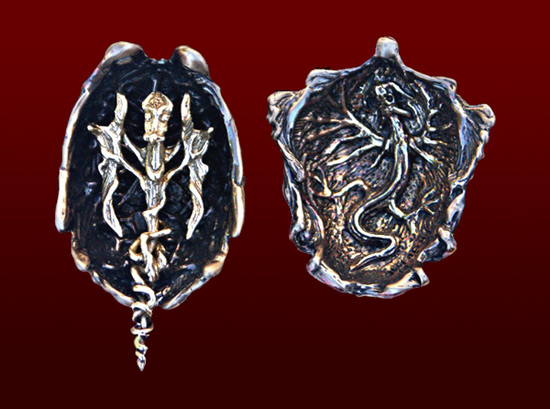The Dragon Egg

Dragons have a long and impressive history. They usually appear as scaly
reptilian
creatures of impressive size and ferocity. They can breathe fire
and some fly as well.
Dragons have different temperaments.
Many are malevolent
predators or guardians of forbidden places.
Others are harbingers of good
luck. It is generally agreed; however, that they are distinctly individual.
No two dragons are alike. Except! They all begin as eggs.
When first laid, the egg, is silvery gray and looks like any other egg.
But
not for long. It soon darkens and develops spots and patches.
The spots swell
and harden into scales. Bumps appear in strategic places.
These grow in sizes
and character as they form horns and claws.
Wrinkles enlarge to form flaps,
which in turn become fins and wings.
Bony plates soon cover the underside
and a tail grows down the center.
The egg becomes active and noisy. It delights
in rocking, tossing, squeaking,
purring, writhing, growling, snapping...
Even a very young dragon is wary and not to be trifled with.
The egg’s
interior is even stranger than the outside.
It is a cavernous chamber,
supported by a fibrous network.
A tiny copy of what the dragon will
become is imprinted on the upper surface, sort of a blueprint.
As the dragon
develops it becomes what it thinks itself to be, and the image disappears.
The fire organ takes up most of the central chamber.
It is, indeed, the
essence of the dragon. Some say it is independent of the beast in
which
it resides
and fly's off when a dragon dies.
A dragon egg never hatches.
When it matures, it is a dragon.
It simply walks
or flies or swims away.

The interior of the
egg has a dragon in the lid
and a removable fire spirit that sits in the
bottom.